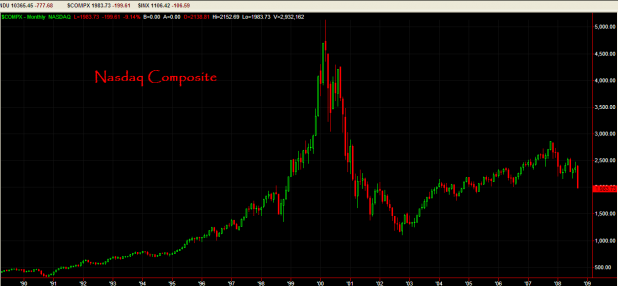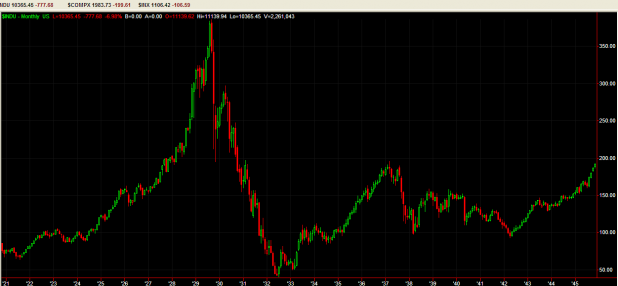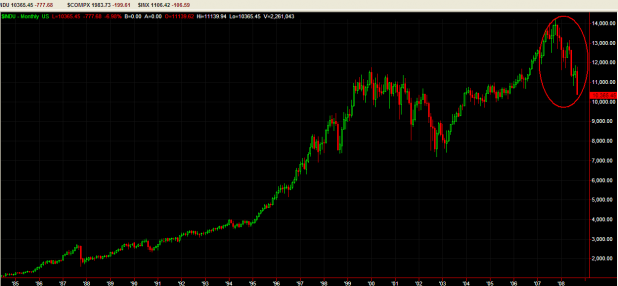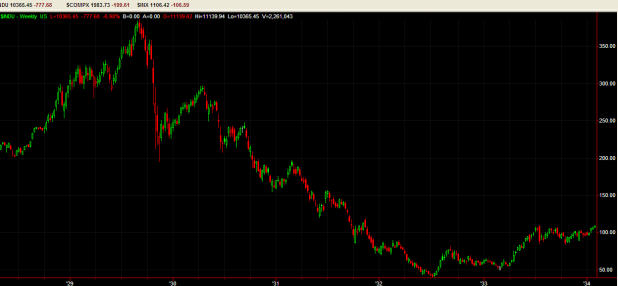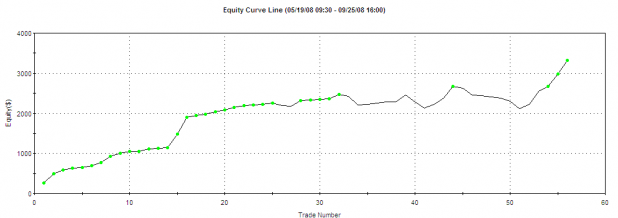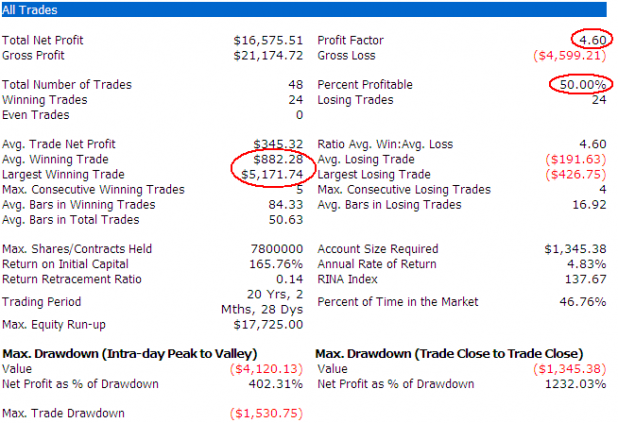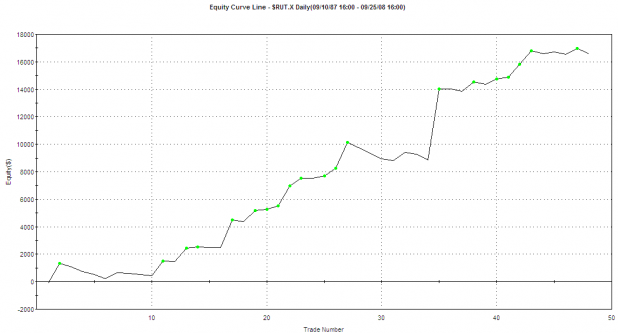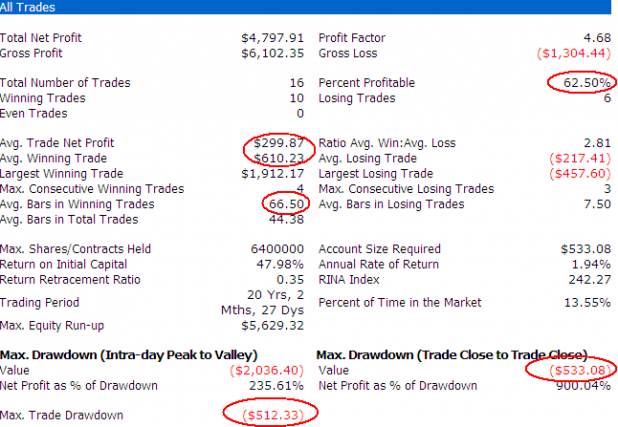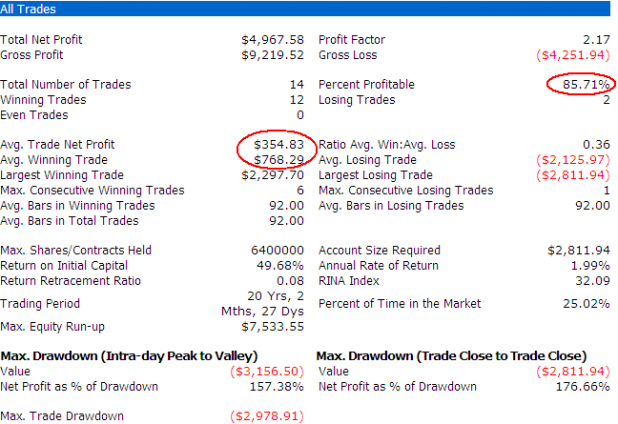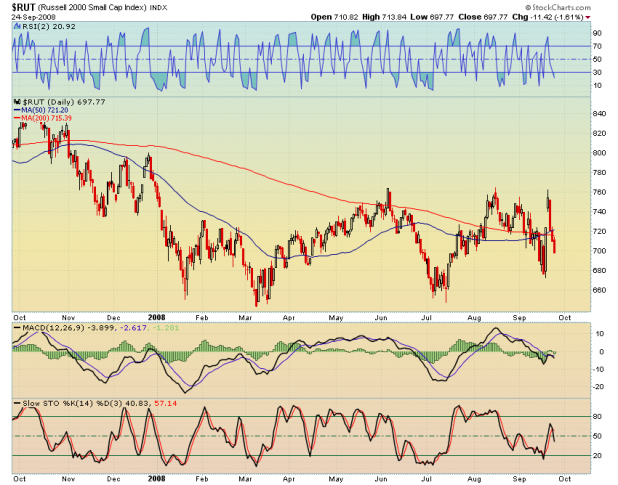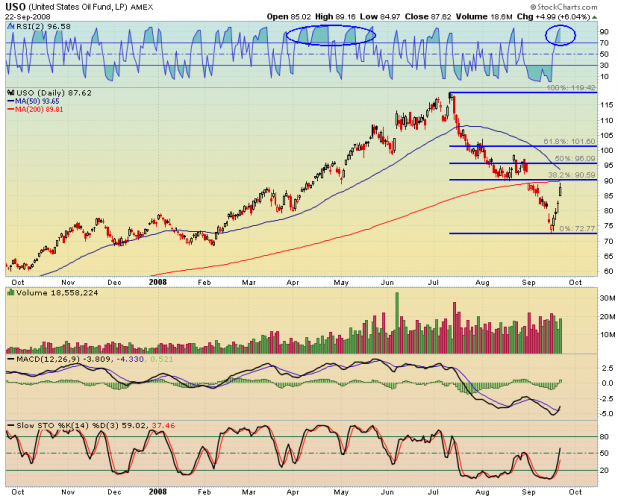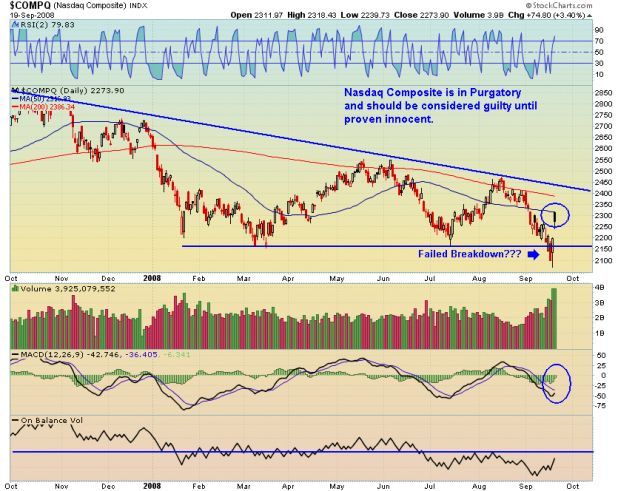
While I’m bullish on the next few weeks, the indexes should be considered guilty until proven innocent, as they are trading beneath heavy resistance and are still within the confines of a year-long declining ranges and channels.
The Nasdaq hit hard underneath the 50 day average and closed lower. Only the recent intervention saved the index from breaking down out of a descending triangle. Despite Gov’t intervention, January, March, and July lows are still support, and should not be breached. Should these low get broken, the Armageddon Trade will again be in play.
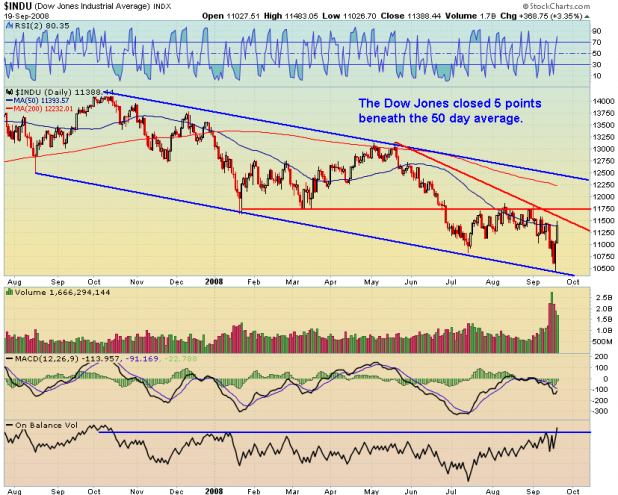
The Dow Jones is sitting beneath multiple areas of resistance: The January and March lows, the August highs, the recent downtrend line (in red), and the 50 day average. Should the Dow swiftly overtake these areas of resistance, the Bulls will have showed some conviction, and a run to the upper channel line is likely.
The Dow is clearly trading within a declining channel. While the swings should continue to be in play, I would not give the All Clear, All Bullish signal until the Dow can break above the upper channel line.
Note the OBV attempting a new 52 week high.
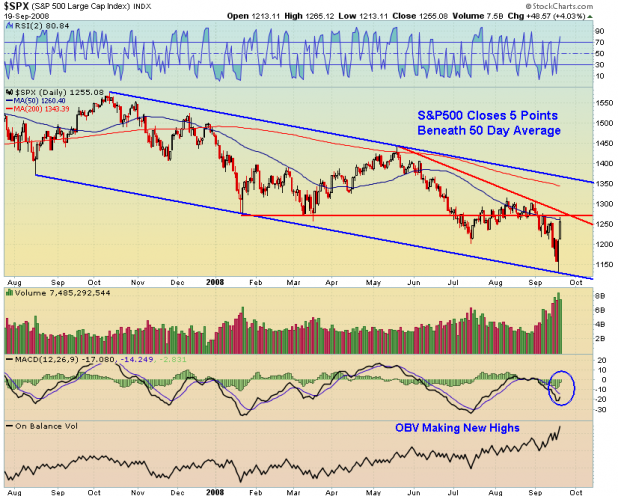
The chart of the S&P and the Dow Jones are very similar in terms of resistance. It too trades within a declining channel.
Note the OBV making new highs. I’m not quite sure what to make of that.
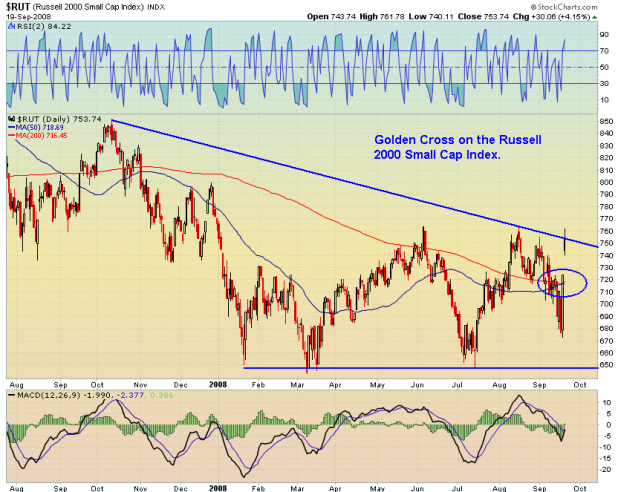
The Russell 2000 Small Cap Index is the best-looking of the group, although it too failed to make it above the level of 760, where it was also denied in June and August.
Note the Golden Cross.
The totality of the situation is that all the indexes have to stay strong, at this level. The MACD has not even crossed the 0 line, on any of the indexes. All the indexes are closer to overbought than oversold, on a short-term basis, although they can certainly move up another day or two before I’d consider them overbought. Because of this, I’m expecting some attempt at follow through on Monday and a pullback Tuesday with some stabilization the rest of the week.
This is do or die time. While I expect some weakness and pullbacks, the indexes must overcome resistance quickly, or I expect that the Armageddon Trade will be jump-started. Save for an interest rate cut, the government is absolutely out of bullets. The indexes have a lot of important work to do, as should they begin heading for the recent lows, it will absolutely be a catastrophe, and I will not be surprised to see a 10-20% move lower.
Comments »

